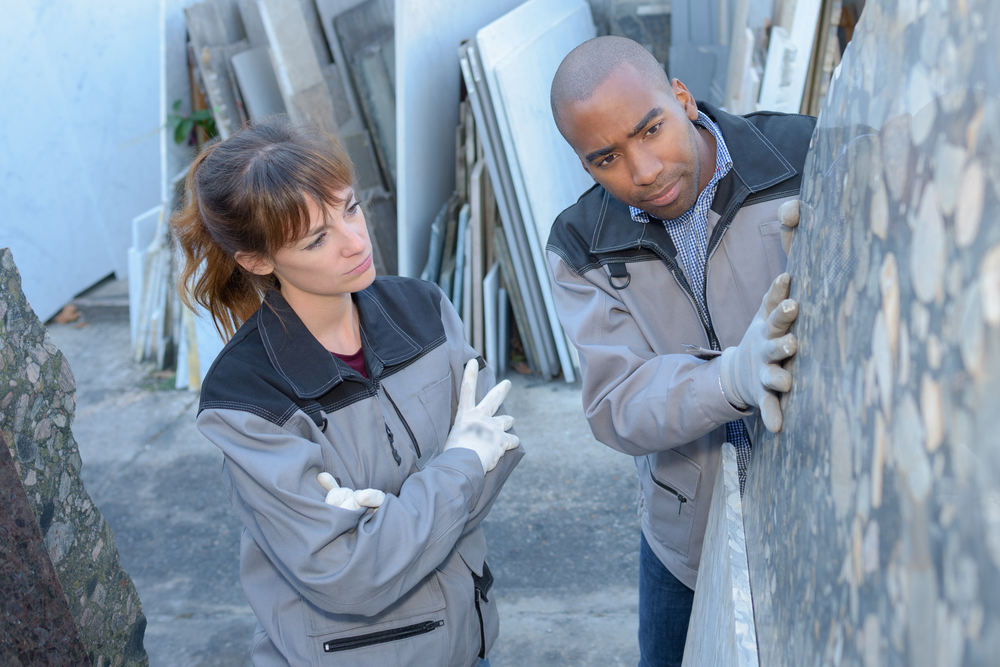Your cart is currently empty!
How Are Countertops Made
Published
Categories

There are so many options for countertop that it can make your head spin. Most people are shying away from formica countertops that harken to a time period of station wagons and bell bottom pants. Formica can be a good choice for a rental property that you know is about to be destroyed but….who wants to rent to people like that? There are more affordable, quality options for countertops in the 2020’s. Natural stone countertops, quartz countertops and porcelain countertops are some types that offer modern durability and style. Have you ever wondered how these beautiful countertops are made?
Natural Stone
Marble is created from limestone that is pressurized over millions of years, deep within the earth. The heat and pressure causes the stone to recrystallize and form gorgeous patterns with sparkling veins in different colors that we could never imagine to create. In the earth science world this is metamorphism.
Where is marble extracted? A great deal of the world’s marble is extracted in Italy. Spain, India and China are other countries where marble is commonly extracted from quarries. The stone is cut out with giant channeling machines and wire saws, then cut into blocks. Interestingly, fiber mesh and glue are used to cover the slabs and give them more structure when cutting. The slabs are coated in resin, then polished to remove the residual resin. The slabs are further cut to size with computerized cutting and may also be water-jet polished to smooth corners.
Granite
Granite countertops are made through the cooling of magma beneath the earth’s surface (earth science 101 anyone?). As such, granite is an igneous rock. Granite is mined out of mountains with explosives and large tools to extract the slabs. Brazil supplies the majority of the world’s granite for countertops, followed by Italy, India, and China. However, most U.S. states supply some kind of granite to the industry as a whole. The rest of the process is cutting and polishing.
Quartzite
Quartzite is marble’s pretty cousin. It is also a metamorphic rock, meaning that it was once something else and was turned into its shimmering, dazzling self by extreme heat and pressure. Such a beautiful metaphor. Quartzite begins as sandstone. Hence, its color variations are a bit less extreme. This stone comes in neutral colors with sparkly subtle veins. Quartzite is found in many parts of the word, it is common to mountain ranges. Brazil and Poland export quartzite but many parts of the United States do as well.
Quartzite is different from marble in that it is naturally more porous which can actually make it a terrible material for countertop without treatment. Quartzite countertops are treated with a sealant before being cut and polished into countertops.
Quartz
It is easy to be confused between quartzite and quartz. Quartz itself is a naturally occurring crystal. Quartz countertops are manufactured using the crystals. First, the quartz is mined with backhoes, excavation and sometimes explosives. Then, it is cleaned, sorted and crushed. The crushed quartz is mixed with resin and pigments. Then it is heated to harden, pressed, cured again with heat, polished and sealed. This process allows for a wide variety of colors and styles.
Porcelain
Porcelain countertops are made with crushed stone or quartz, clay, feldspar and kaolin. The process of mixing and pouring created more control over the color and pattern of the porcelain countertop. It is an extremely dense material. Once it has cooled and hardened, the slabs are polished and coated.
Regardless of your choice in countertop, it’s important to understand that natural stone and manufactured stone countertops are prepared with durability in mind. From the quarry to the kitchen, these countertops are better quality than most other manufactured varieties you will find. Have an expert help you pick out your countertop for lasting appeal and functionality.